Always Shooting, Never Shot: Motohiro Hayakawa’s Fantasy Battlegrounds
In these colourful and cluttered paintings, mysterious landscapes teem with aliens, monsters, and the occasional human.
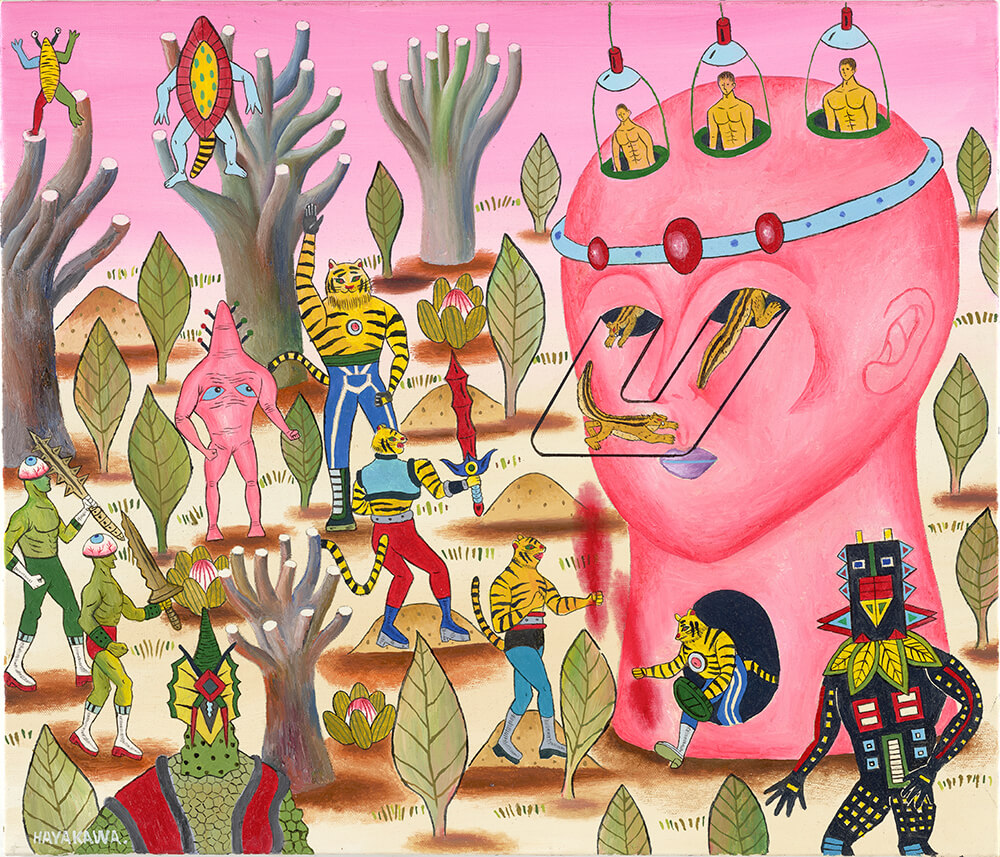
© Motohiro Hayakawa
Creatures with crab claws and elephant legs attack one another in a fantastical garden of giant flowers. Tiger-torsoed soldiers clutching red swords are pursued, or perhaps in cahoots with, eyeball-headed men with green skin. Everywhere, walking amalgams of the animal, vegetable, and mineral erupt in weaponed delight. In these colourful and cluttered battlegrounds, mysterious landscapes teem with aliens, monsters, and the occasional human.
Born in 1974 in Yamaguchi prefecture, Motohiro Hayakawa is a Japanese illustrator and artist, notable for his bright, nostalgic acrylic paintings and rough pencil drawings. The latter, typically depicting oddly transfigured human faces or strange creatures, often bear traces of erased marks, lead smudges, and even crumpled paper. Both mediums recall the anarchic styles of his heta-uma (‘bad-good’) forebears associated with the avant-garde 70s manga anthology Garo. Defined more by a philosophy than a single unified aesthetic, heta-uma revelled in unpolished, subversive takes on manga and graphic design, often with dark and comic themes. Yet, to look closely at Hayakawa’s paintings, another set of influences has a much more prominent role.
Chaos in the Space Age
Descriptions of Hayakawa’s paintings in gallery brochures or articles inevitably allude to the strong influence of tokusatsu. Tokusatsu, literally ‘special effects’ in English, emerged as a major element of Japanese film and TV from the 1960s onwards, referring to live-action productions with heavy practical effects. In the west, perhaps the most well-known examples are the eponymous Godzilla, in the case of kaiju (giant monster) films, and Power Rangers, the American adaptation of Super Sentai, in the case of superhero television. Hayakawa’s paintings are heavily populated with visuals taken from both subgenres: giant scaled lizards, laser guns, spacesuits, and the like.
But Hayakawa doesn’t merely dress his work up in the motifs of tokusatsu, instead subtly subverting them. Take this quote from Tohl Narita, a renowned designer in the world of tokusatsu, from Tohl Narita: Ultra Monsters (1983): ‘Monsters, which are expressions of chaos in the space age, should not be gory creatures. I found the only means to achieve such monsters in abstraction.’ Narita’s design philosophy was centred around the conception of the superhero as the expression of order and the monster as the expression of chaos. This was demarcated visually through the clean, sleek lines of the superhero design, and the complex, unnatural, often inorganic forms of the monsters. Yet Hayakawa’s figures reveal no such readable binaries. Varied groupings of roughly humanoid figures fight ambiguous battles: masked, animal-headed, or lacking a head at all, their emotions are as hidden as their motivations. The defining binary of the tokusatsu superhero genre, good vs. evil, also falls into chaos.
Toy Soldiers
Hayakawa’s vision of the tokusatsu battleground is like a child’s sandbox; varied permutations on innocent battles, with no end in sight. Look closely at their ‘fighting’. Whilst a laser may occasionally cut a line across the canvas, the only scars are compositional: a swathe sliced across the page, but not a mark on the fighters themselves. These are not ‘gory creatures’: for all their lasers and swords, they retain their forms cleanly. None are missing limbs, none gush blood. Those composed of human body parts appear to have grown them organically, like the notorious Vacanti mouse with an ear implanted on its back. In their permanence, they are like toy soldiers, always shooting yet never shot.
To return to Hayakawa’s composition, his figures exist as flat individuals on the page, occasionally appearing superimposed on to their backgrounds. It nostalgically recalls an old animation, where two-dimensional cut-outs navigate static backgrounds, moving independently of one another except for the occasional overlap. This cartoonish permanence and indivisibility again emphasises the atmosphere of an ‘innocent battle’.
From Toys to Art, and Back Again
This toy battleground is of course a very pure expression of tokusatsu. Popular western conceptions of tokusatsu often point to the belief that these are shows ‘made to sell toys’, and while the reality of the situation is nuanced, there is an undeniable association between tokusatsu and figurines. Whether in the nostalgic image of children playing with miniature Ultraman toys, or the current spectacle of expensive figurines in Akihabara in glass cabinets. Hayakawa leans into this, producing his own ‘art toys’, soft vinyl versions of his colourful characters, complete with retro packaging.
In these, Hayakawa’s childlike visions become fully realised, a charming circularity as this imagery makes its way from toys into paintings and back round again. Although more likely to be displayed on a mantelpiece than clutched in the fist of a five-year old, or scribbled on by a toddler, the playfulness remains; an innocent, ambiguous toy soldier.
More of Motohiro Hayakawa’s works can be seen on his Instagram.
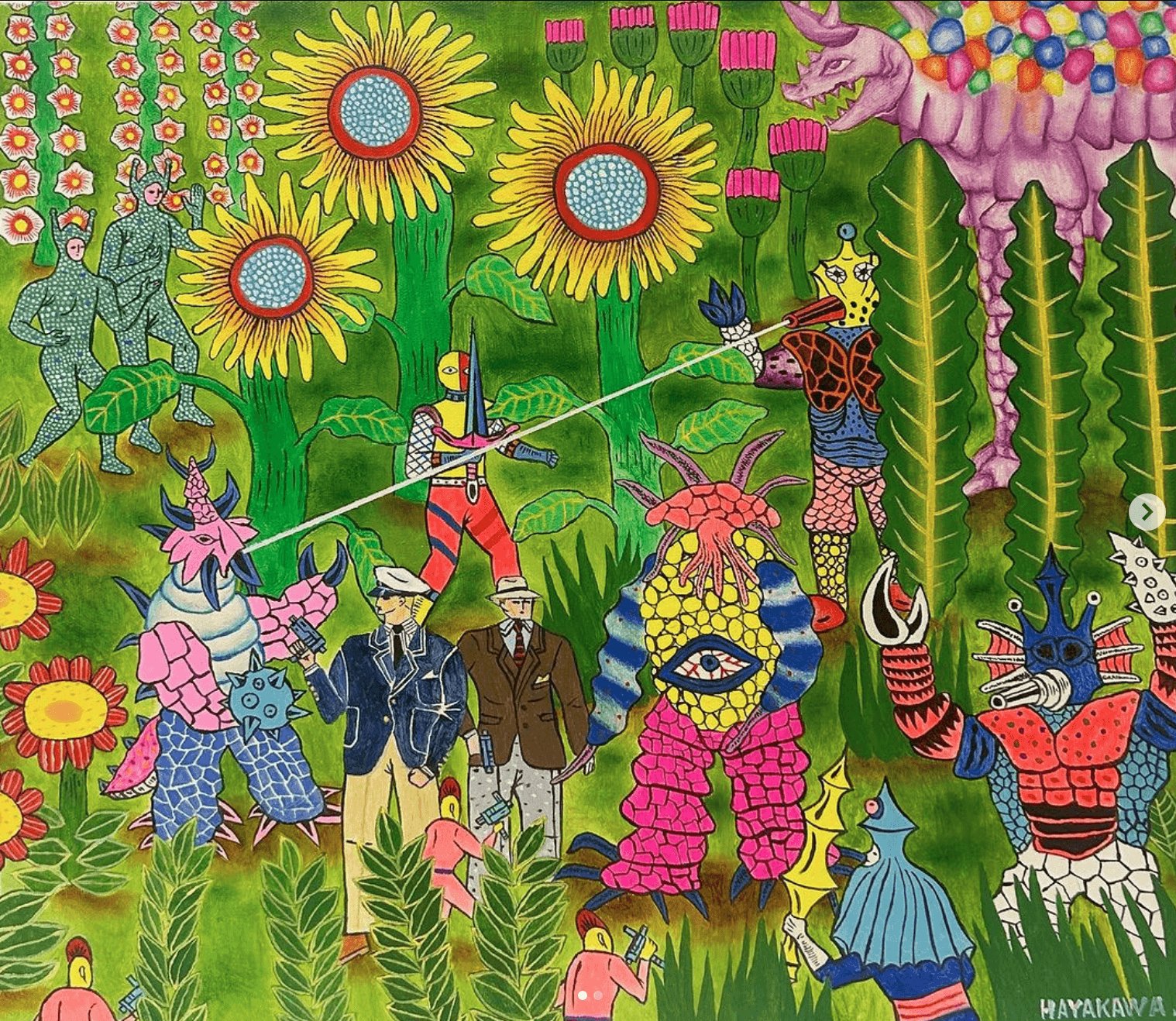
© Motohiro Hayakawa
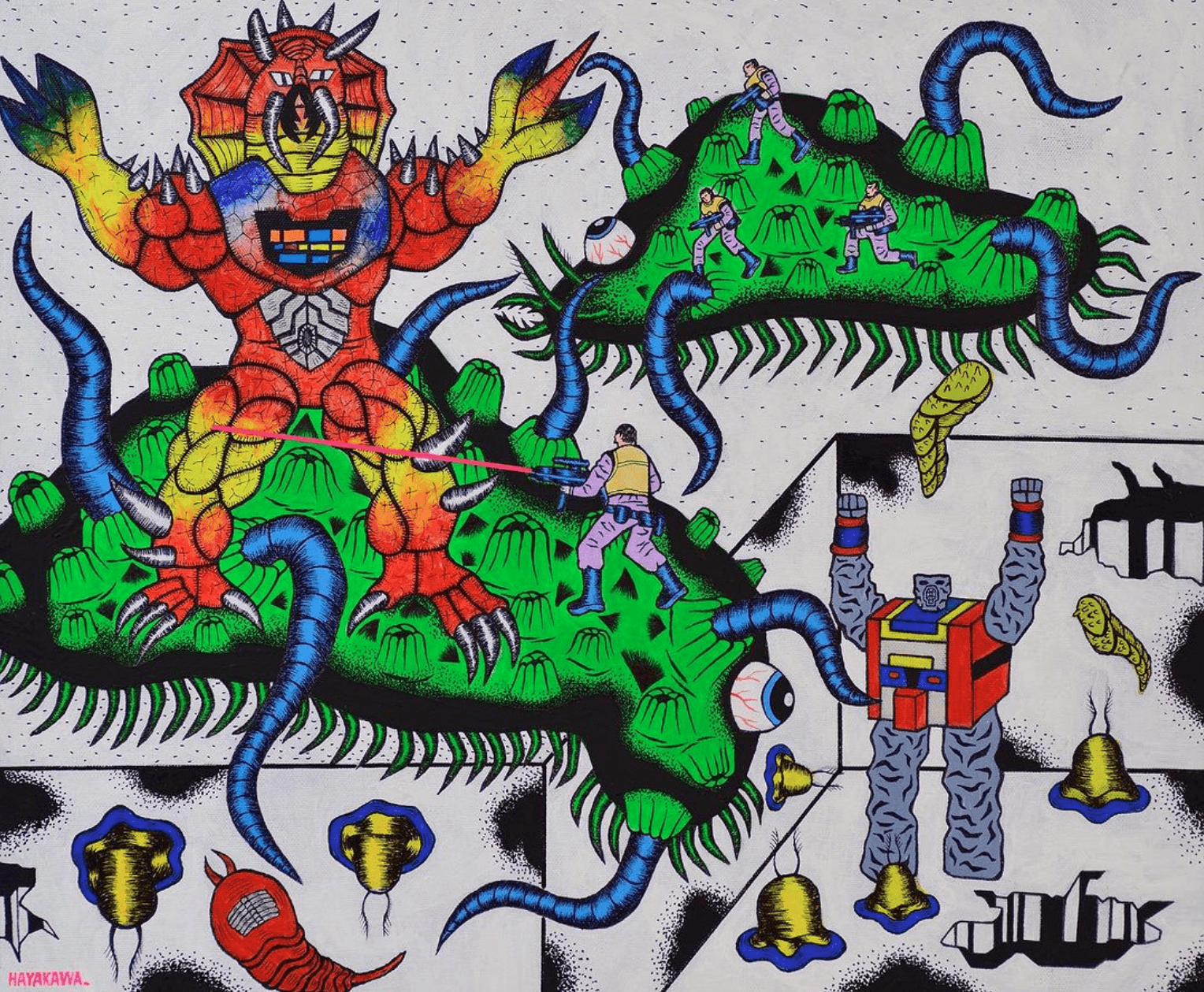
© Motohiro Hayakawa
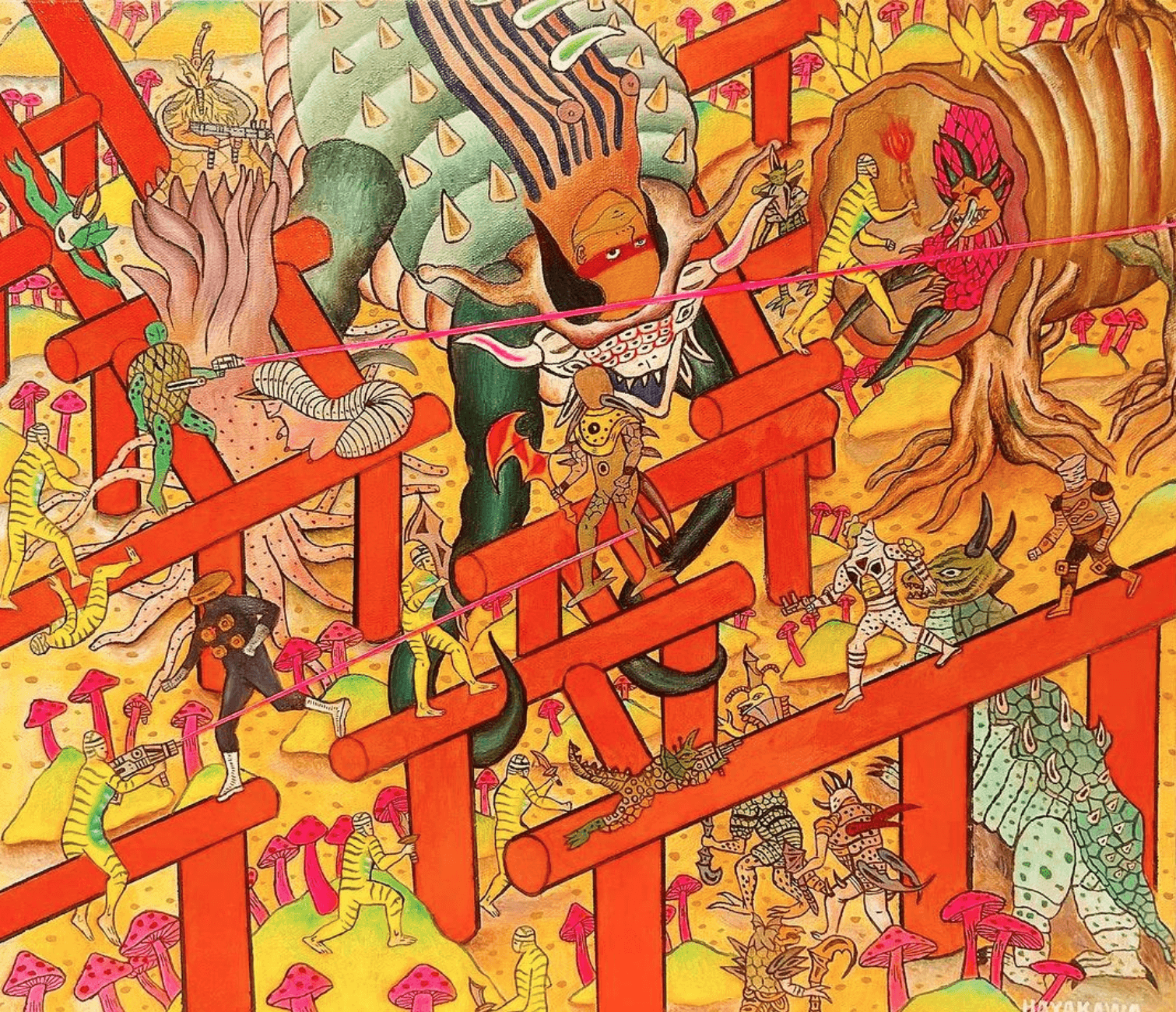
© Motohiro Hayakawa
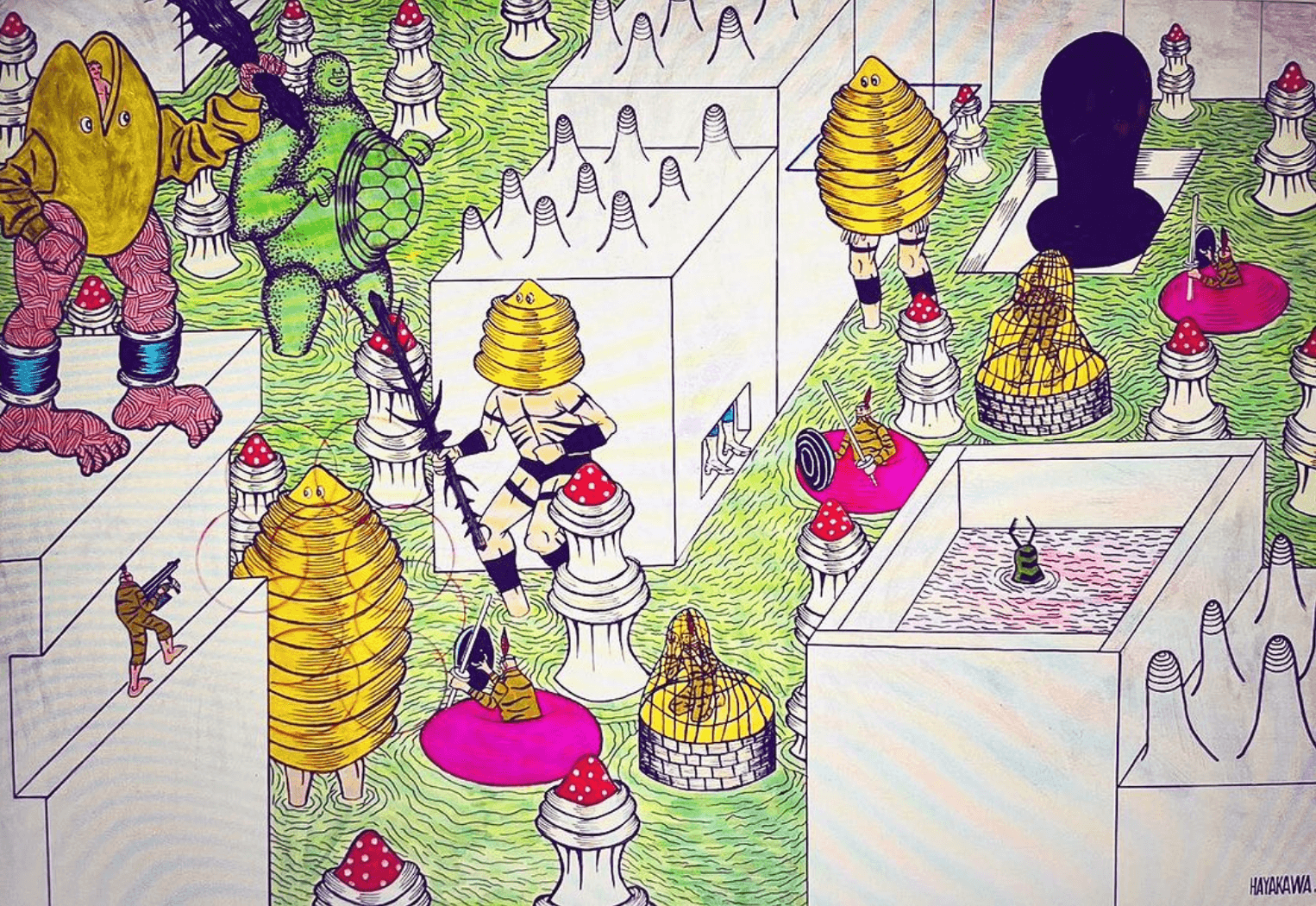
© Motohiro Hayakawa
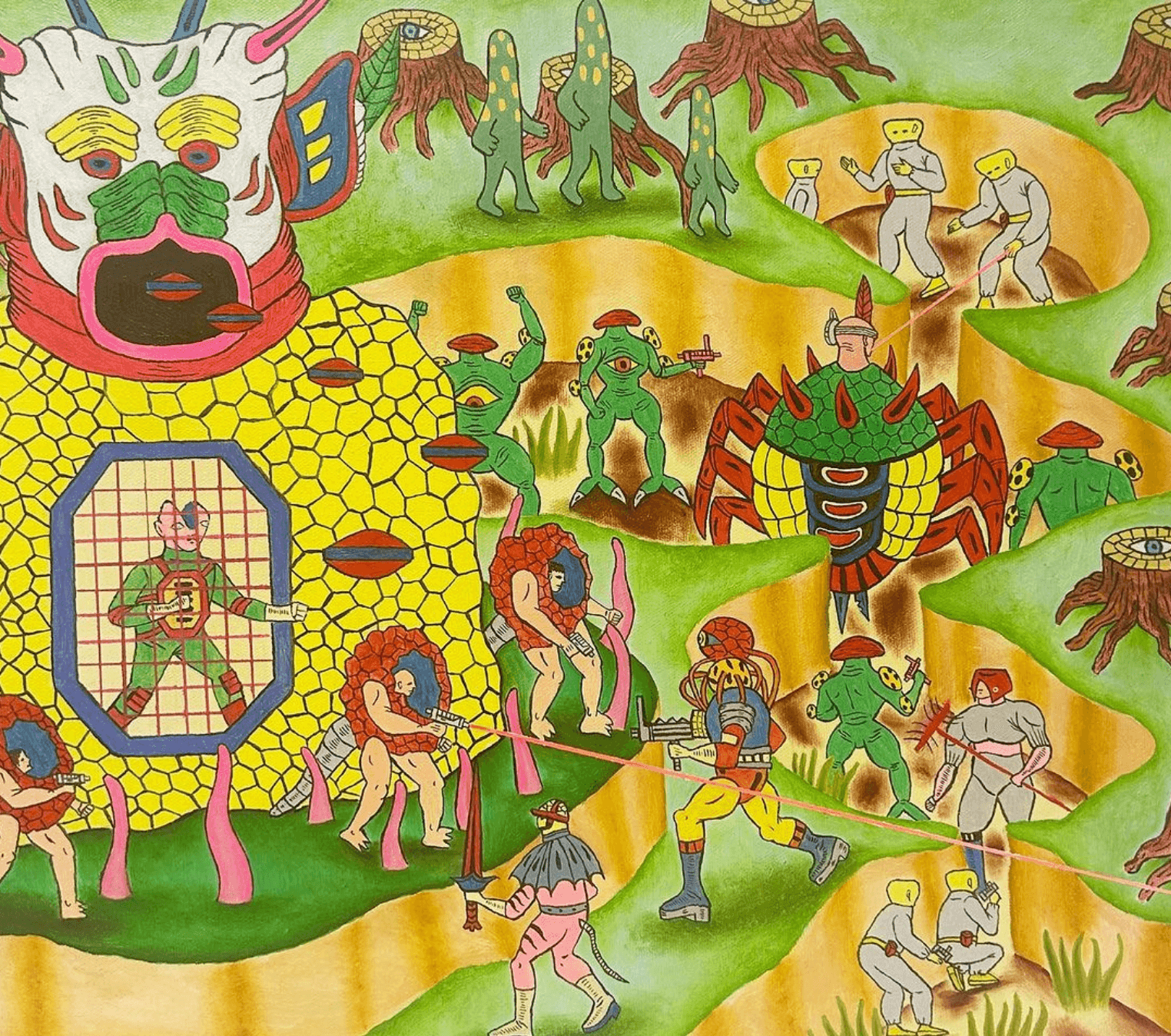
© Motohiro Hayakawa
TRENDING
-
The Tattoos that Marked the Criminals of the Edo Period
Traditional tattoos were strong signifiers; murderers had head tattoos, while theft might result in an arm tattoo.

-
Chiharu Shiota, Red Threads of the Soul
Last year, more than 660,000 people visited the retrospective 'Chiharu Shiota: The Soul Trembles' exhibit at the Mori Art Museum.

-
‘Before Doubting Others, Doubt Yourself. Who Can Truly Say a Dish Isn’t What It Used to Be?’
In ‘A Non-Conformist’s Guide to Surviving Society’, author Satoshi Ogawa shares his strategies for navigating everyday life.

-
The Story of Sada Yacco, the Geisha who Bewitched Europe
Described by Dazed magazine as the first beauty influencer, she has been restored to her former glory since 2019.

-
Ito Jakuchu's Naturalist Paintings
From 15 September until 14 October 2018, the Petit Palais showcased the artist's iconic ‘Images of the Colourful Realm of Living Beings’.





